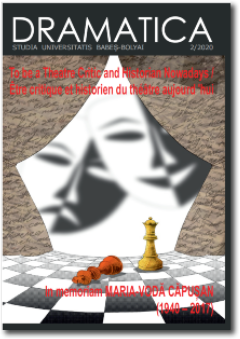TROIS SCÈNES DE BAL DANS LE ROMAN FRANÇAIS (« LA PRINCESSE DE CLÈVES », « MADAME BOVARY », « LE RAVISSEMENT DE LOL V STEIN »)
THREE BALL SCENES IN THE FRENCH NOVEL (“LA PRINCESSE DE CLÈVES”, “MADAME BOVARY”, “LE RAVISSEMENT DE LOL V STEIN”)
Author(s): Marius PopaSubject(s): Theatre, Dance, Performing Arts, Language and Literature Studies, Fine Arts / Performing Arts, Comparative Linguistics, French Literature, Philology
Published by: Studia Universitatis Babes-Bolyai
Keywords: ball scenes; French Novel; dramatic mechanisms; narrative pretext; love stories;
Summary/Abstract: Three Ball Scenes in the French Novel (“La Princesse de Clèves”, “Madame Bovary”, “Le Ravissement de Lol V Stein”). This article aims to analyze – in a comparative manner – three ball scenes from novels belonging to leading authors of French literature (Madame de Lafayette, Gustave Flaubert and Marguerite Duras), highlighting a series of dramatic mechanisms used by novelists in the construction of such a diegetic plot. If La Princesse de Clèves describes a ball that takes place in the royal court, with all the typical scenes of the time (embodied in a real mixture of intrigue and gallantry specific to the living environment of the actors, which make the topos of the novel itself become a collective character), Madame Bovary describes, instead, a ball animated by the high society of the nineteenth century, with all the specifics of the realistic episteme (the ball becomes here an opportunity to evoke the painful contrast between different living environments, which the heroine cannot access and which causes her, consequently, to take refuge in an imaginary universe). Much closer to the spirit of contemporaneity, Le Ravissement de Lol V Stein, the famous “nouveau roman”, relies on an image of the harmful and destructive ball, paying particular attention to the psyche of the characters. These novels lean – starting from this narrative pretext of the ball – on some love stories built through specific strategies of the theatre, which is, in essence, the central object of our analysis.
Journal: Studia Universitatis Babes-Bolyai - Dramatica
- Issue Year: 65/2020
- Issue No: 2
- Page Range: 221-242
- Page Count: 22
- Language: French

